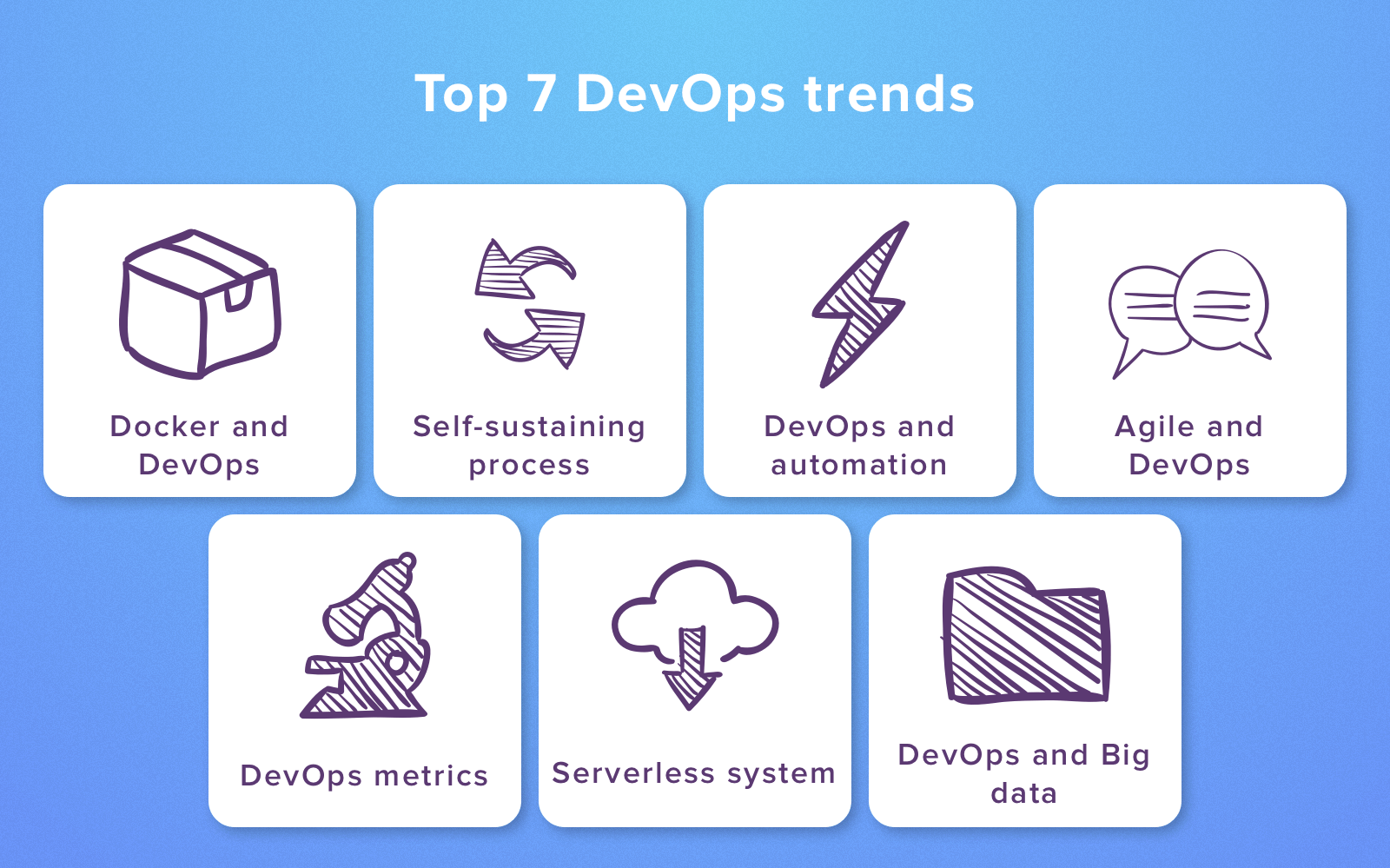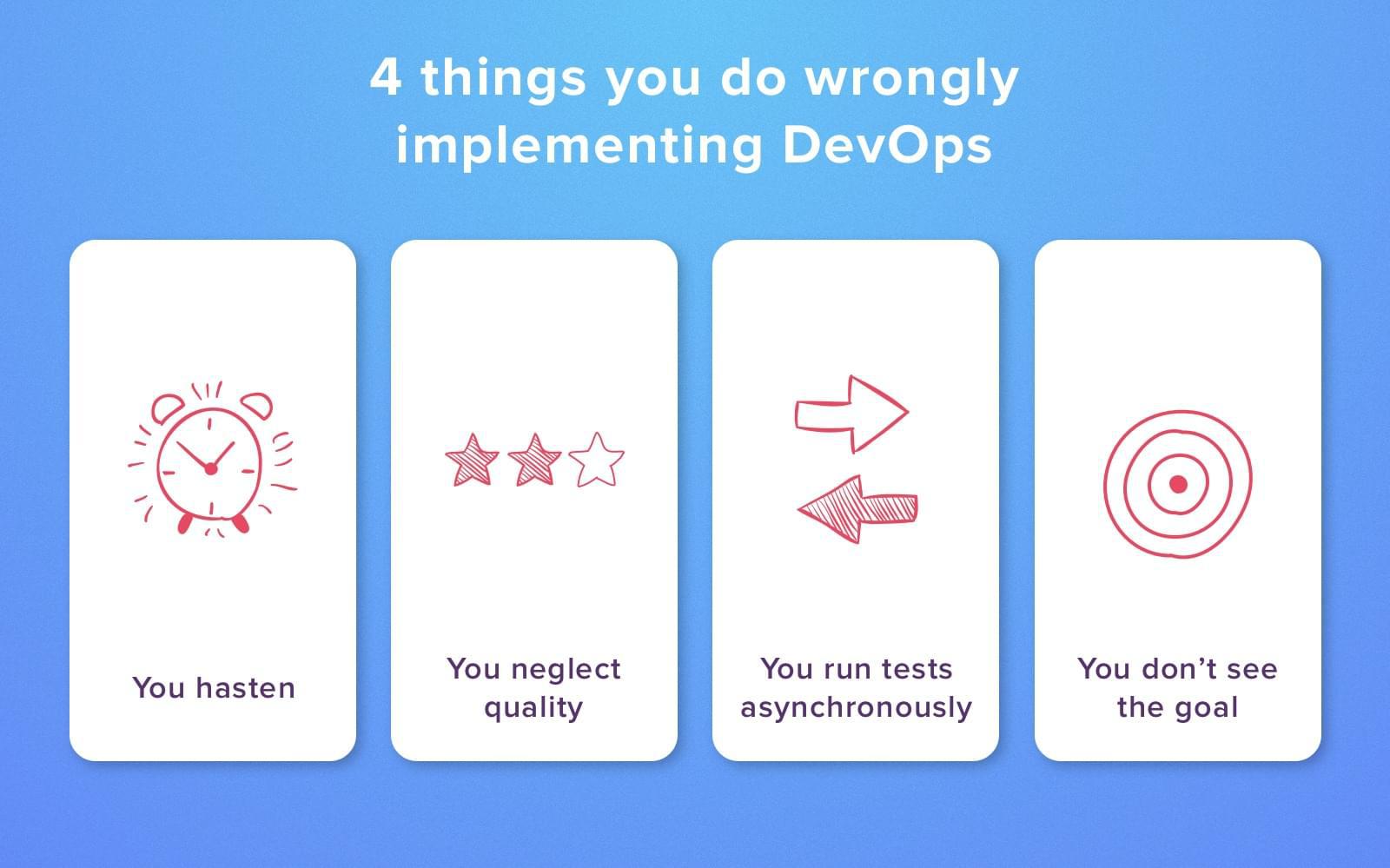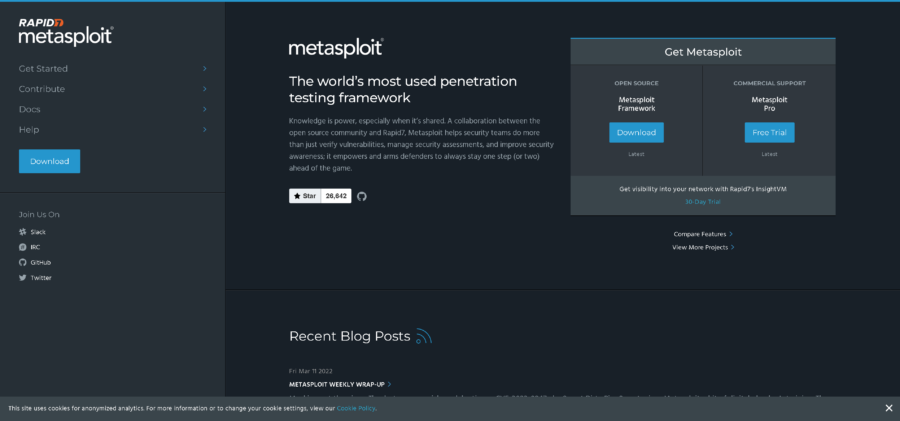Awareness of the latest DevOps trends is important for companies which consider the integration of DevOps into their development processes as well as the ones already using it. That is why I am going to guide you through the DevOps trends for 2019.
Let’s get straight to the topic. The implementation of DevOps can save a lot of time for developers and help cut expenses for the company. But approaches and tools that were used the last year, would not necessarily be up-to-date in the following year. To help you make no mistakes, I am glad to share the top 7 devops trends for 2019 focused on automating deployment and other more general development processes.

There is no more effective tool than Docker when it comes to the containerization process. This fact alone contributes to ever-growing interest to this computer program among the DevOps community. The main tool’s feature is that it simplifies configuration management and app development.
Another significant advantage of Docker lies in constant updates which improve the performance and make the program better. As an example, a native support for Kubernetes has been added not so long ago. This means that is is possible to avoid paying fees to PaaS systems for using their infrastructure and environment towards using cloud-agnostic Containers.
What does it stand for? A self-sustaining process (also known as self-healing) empower the system with the capability of recreating all the data from a container lightning fast. In other words, people who work with such a system can be sure that everything will be restored in case any sort of a failure occurs. What is more, a report would be sent in case an event of failure took place.
By the way, all of this became possible due to the Kubernetes support.
Automation is the cornerstone of DevOps, its primary focus. This trend will probably never lost the relevance. If you want to keep up with the time — forget about manual testing. Automated testing is tiresome to some extent but is a huge time-saver in the long-term. Such tests can be used multiple times, and eventually, bug fixing will be taking much less time.
Agile approach is the foundation of modern software development. It is hard to find a company which does not stick to it. If you are an admirer of this methodology, I have a good news — Agile and DevOps are interrelated. That is because DevOps can only be used in a flexible environment to bear fruit.
The results of DevOps adoption have to be estimated in order to understand how effective or ineffective it is for a concrete case.
Serverless computing is no longer a term from sci-fi movies. Do not spend extra money on infrastructure and focus on development.
Big data in e-commerce and other fields cannot surprise anyone these days. Big data in DevOps neither. Once you start applying DevOps in your software development process, the big amount of data is formed, and consequently, should be processed. Machine Learning is the most effective way to deal with that data.
While DevOps is just great for software development, many companies struggle and fail to successfully implement it. Let’s briefly consider the main reasons for this.

The integration of DevOps into software development processes is definitely not an easy task. It may require considerable time and money investments. Not mentioning the complete review of a company’s workflow. But the outcomes are worth efforts.
By Sergey Lypchenko





